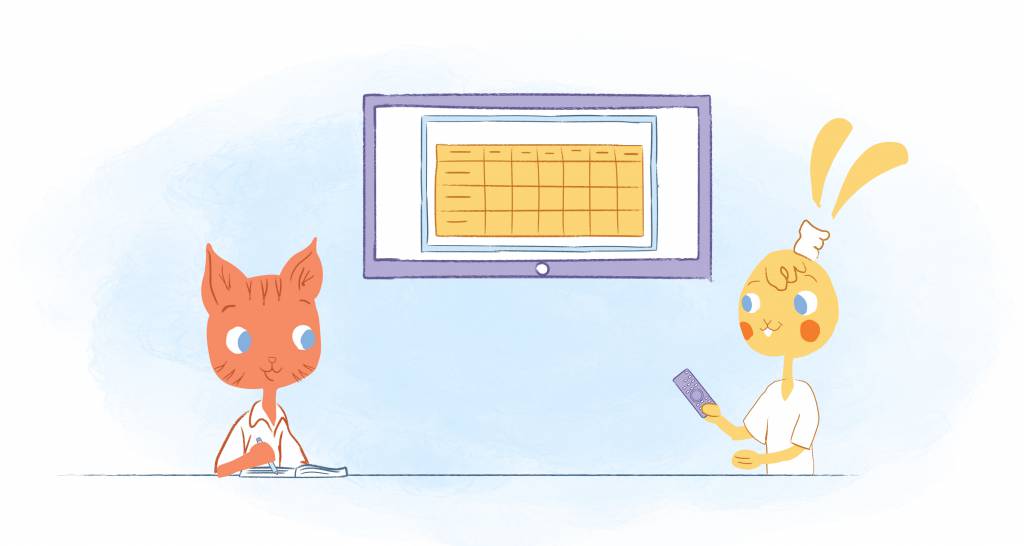

Motivation in the workplace is defined as “the willingness to exert high levels of effort toward organizational goals conditioned by the effort’s ability to satisfy some individual needs” (Robbins in Mobbs and McFarland, 2010).
Motivation — vital to business and life.
Because motivation is vital to the success of any business. As a subject, motivation has been studied for well over a century by psychologists, sociologists, economists, and organizational development experts.
After all, when there’s a highly motivated team, they’ll be more productive. And when productivity is high, you’ll be more lily to achieve your business goals.
Motivation is so important that it should be a main objective in both your business and organizational plans.
But, where exactly do you get started when it comes to motivation in the workplace?
Intrinsic vs. extrinsic motivation in the workplace.
When it comes to motivation, there are two types; intrinsic and extrinsic.
Intrinsic means “relating to the essential nature of a thing.” With that in mind, intrinsic motivation is what drives a person to do something because they find gratifying, interesting, or enjoyable.
Regardless of the psychological, spiritual or physical needs, or how it fits-in with the person’s views, intrinsic motivation occurs without external rewards.
The reward is actually the opportunity to learn, grow, explore, and actualize our potential. For example, an employee reads because they’re curious and interested about the topics.
Extrinsic, on the other hand, is defined as “not part of the essential nature of someone or something; coming or operating from outside.” As such, this behavior is influenced by external rewards like money, prizes, or praise.
In other words, the employee does something because they’re receiving an outside reward. For instance, someone working in manufacturing may not find routine tasks enjoyable. But, because they’re receiving a paycheck, they’re motivated to complete those tasks.
Why extrinsic motivation isn’t effective in the workplace.
To be fair, extrinsic motivation can be beneficial. No matter how much your employee loves their job, just ask them if they would do it for free? The expected response would be them laughing out loud uncontrollably.
Additionally, as Ted Sapountzis perfectly stated in a post on Simpplr, “It isn’t possible to provide rewards for every task that is done well. When good performance is closely linked with rewards, extrinsically motivated employees won’t take on extra responsibility unless they can see a payoff. This dramatically limits discretionary effort — a strong indicator of engagement levels.”
In fact, research shows that excessive rewards can decrease intrinsic motivation.
So, while you’ll need to offer some extrinsic motivation, you should be focusing more on fostering intrinsic motivation in the workplace. This way you’ll “spark employees’ passion and creativity,” while “giving them the satisfaction of a job well-done.”
8 Ways to foster intrinsic motivation in the workplace.
In order to foster intrinsic motivation in the workplace, you should start by encouraging the following internal motivators.
Autonomy.
Studies have found that autonomy boosts both job satisfaction and productivity. In your workplace, allow employees to make some decisions on their own. One example would be offering flexible schedules where employees can determine when and where they work.
Of course, you still need to establish boundaries. So, when it comes to flexible schedules, maybe only offer this once or twice a week.
Knowledge.
Offer your team a chance to develop or strengthen their skills. If there’s an employee who wants to get into IT support because they’re curious about how people interact with networks, help them. You could provides them with training that would steer them towards becoming an IT specialist.
Purposefulness and meaningfulness.
When employees know the purpose and meaning of their job, they’re more creative, engaged, happier, and dedicated. In other words, they want to know how they fit into the bigger picture.
There are several ways to go about this. For starters, you could explain how each team member has helped achieve specific goals. You could encourage them to use their strengths. And, you could provide them with opportunities to use those strengths to help others.
Responsibility.
You don’t want to assign new tasks to an employee who is already bogged down. But, sometimes you can give them additional responsibilities. This could be giving an employee a chance to manage or lead a team throughout an entire project.
Another option would be letting them use their talents. If someone in billing is also a talented writer, then give them the chance to write content for your blog or newsletter.
Progress.
It’s human nature to respond whenever we’re making progress. Think about when you just started going to the gym. After tracking your progress over the last month, you notice that you’ve been successful in dropping some pounds — it keeps you motivated to keep going.
Ben Jackson, VP of sales at Voices.com, did this through visualization. Management purchased a white board and then drew a grid on it. They then invited each rep to record their sales.
“On the board was the rep’s name, company, company or client name, revenue, and gross profit. We set monthly targets and totaled the gross profit column as we went along,” said Jackson.
This not only visualized progress toward meaningful goals, it also encouraged accountability.
Accomplishment.
Your tech support, for example, could be motivated by the fact that they get joy in helping your customers. You go remind your team of their accomplishments by giving them a shout in a company newsletter or just by saying “thank you.”
Recognition.
Recognition programs often include external motivators like cash prizes or paid vacation days. However, there are employees who are internally motivated more by being recognized as a valuable company resource.
As Due’s Angela Ruth explained, “I know that I feel good when I hear I’m doing a good job or someone asks me what I’ve been up to. I do the same for those I manage because it is a positive way to give someone a boost.”
“First, it shows that you care enough to take a time out in your busy day to check on how they are doing or share some witty banter as a quick diversion. Second, it is a good opportunity to say well done.”
Social interaction.
Humans are innately social creatures. Don’t discourage opportunities for socialization and collaboration. You can encourage this by setting clear company-wide goals and giving employees the option to work independently or in groups.











John Rampton
John’s goal in life is to make people’s lives much more productive. Upping productivity allows us to spend more time doing the things we enjoy most. John was recently recognized by Entrepreneur Magazine as being one of the top marketers in the World. John is co-founder and CEO of Calendar.